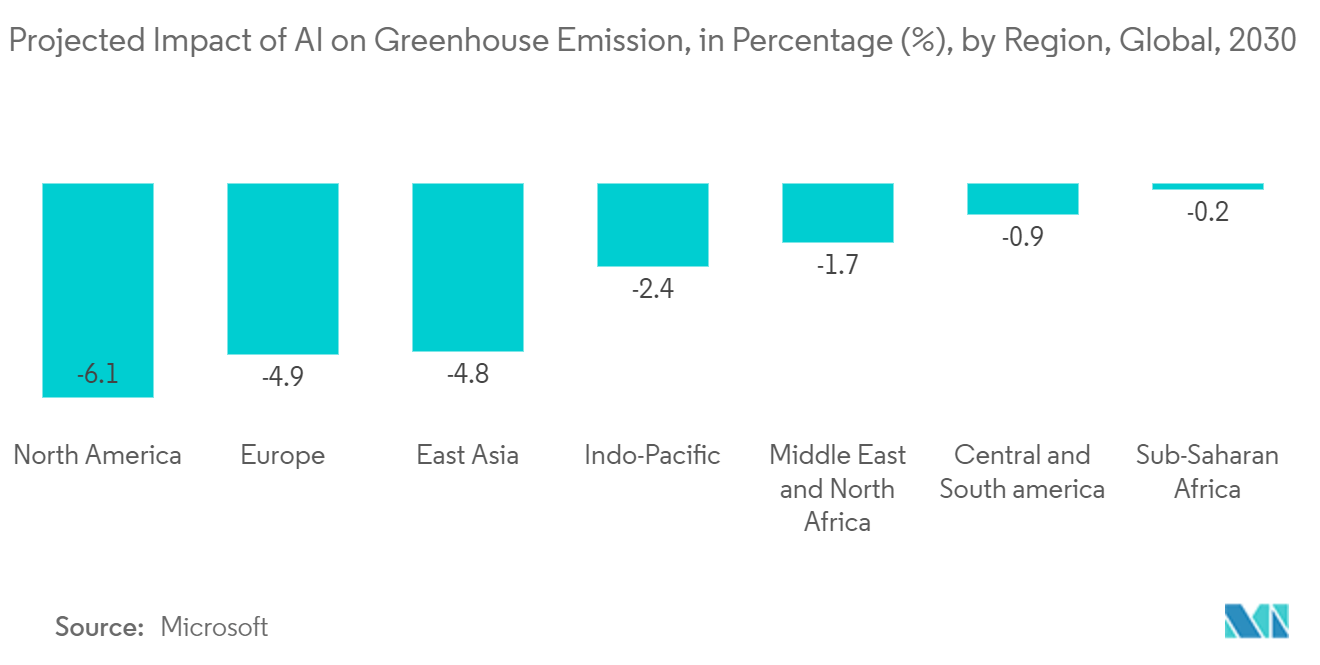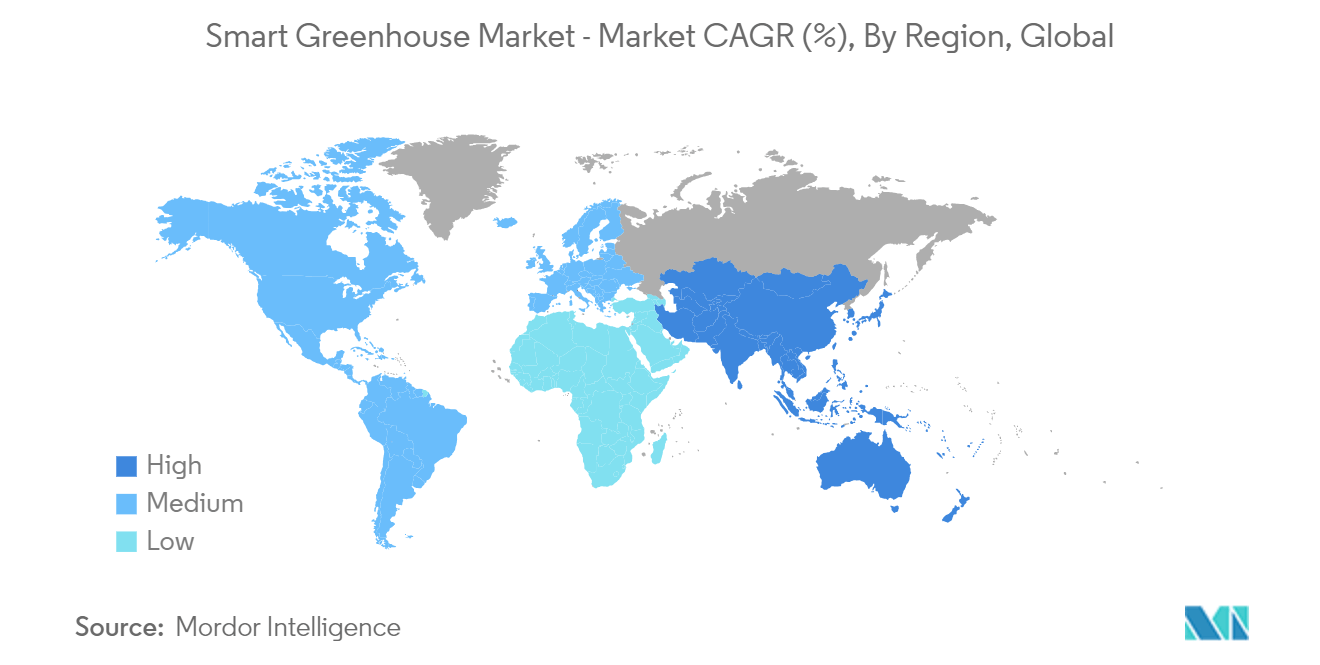Market Trends of Smart Greenhouse Industry
HVAC Segment to Hold Significant Market Share
- HVAC systems play an essential role in smart greenhouses by maintaining an ideal temperature needed for plant growth, minimizing the adverse impact of external temperature changes, and facilitating cultivation throughout the year. Currently, the HVAC industry is gradually shifting focus to energy efficiency. The urgency to tackle climate change and reduce greenhouse gas emissions has pressed governments, businesses, and individuals to actively pursue sustainable options in many areas, while greenhouses are among the most significant contributors to global energy usage.
- The incorporation of AI in HVAC systems has been revolutionizing the overall concept of regularly measuring and adjusting the temperature, humidity, and CO2 levels as needed. This can be done through sensors and monitoring systems in smart greenhouses. Finally, advanced technologies, including machine learning and AI, can be used to optimize HVAC systems for vertical farming, and with developed software solutions, growers can analyze all available data, make a digital twin, perform predictive maintenance as well as performance management, and also apply hyperspectral image recognition. These technologies can aid in automatically adjusting the growing environment to the requirements of the plants, which can lead to higher yields and efficient energy consumption.
- Recently, in October 2023, Hikvision announced the creation of an innovative digital twin solution to align with the growing demand for intelligent and sustainable construction solutions. Hikvision has integrated a diverse range of AIoT technologies, and This convergence encompasses multiple subsystems, including lighting, energy management, environmental monitoring, HVAC, and more. Operators can view heat maps in the digital twin to understand peak times and occupancy rates for key areas of the site, and with AIoT devices observing the requirement, lighting and HVAC systems can be controlled.
- With IoT presenting huge penetration rates in agriculture, AI has also been paving its way towards the respective sector. Automation systems play a crucial role in intelligent greenhouses, enabling precise control and management of environmental conditions. By leveraging actuators and control algorithms, these systems regulate factors like ventilation, shading, irrigation, and fertilization.
- Currently, the latest versions of AI-based smart greenhouses facilitate a vast plethora of features that allow farmers to grow crops and maximize the total amount of produce efficiently. In the coming year, AI is expected to take over the farming process of the smart greenhouse and the entire farm as a separate entity that can make calculated decisions by itself. This will help farmers separate themselves from the daily farm management processes and use their time better, focusing on expanding their business rather than sacrificing 40-50% for management. As per Microsoft, used for environmental applications, AI is expected to reduce GHGs in North America by 6.1% by 2030 compared to a business-as-usual scenario.

Asia-Pacific to Register Major Growth
- In India, increasing consumer awareness and demand for safe, high-quality food products is driving the adoption of smart greenhouses. India’s rapid technological advancements and digitalization efforts are driving the adoption of smart agricultural solutions, including smart greenhouses. Growers are increasingly adopting technology-enabled farming practices to enhance productivity, reduce production costs, and improve livelihood. Smart greenhouses offer innovative solutions that leverage sensors and automation to optimize crop production.
- The unexpected emergence of the COVID-19 pandemic highlighted the growing trend of greenhouse farming in China. The disruptions to traditional farming methods resulting from the pandemic have prompted various regions in China to adopt more advanced agricultural practices to enhance food security and maintain standards of safety and quality.
- Japan is increasingly utilizing smart agriculture, raising expectations that artificial intelligence (AI) will be able to take on more labor-sensitive tasks to help alleviate the country’s severe shortage of manpower. Growers who operate large-scale smart greenhouses are at the forefront of using AI-equipped robots developed by Japanese start-up companies. The AI-equipped robots have the potential to significantly impact the future of farming by improving the process of growing and harvesting agricultural products.
- Smart greenhouses support the cultivation of a wide range of crops, including vegetables, fruits, flowers, and herbs. Malaysian growers differentiate the produce by adopting smart greenhouses and offering premium and high-value products to consumers.


